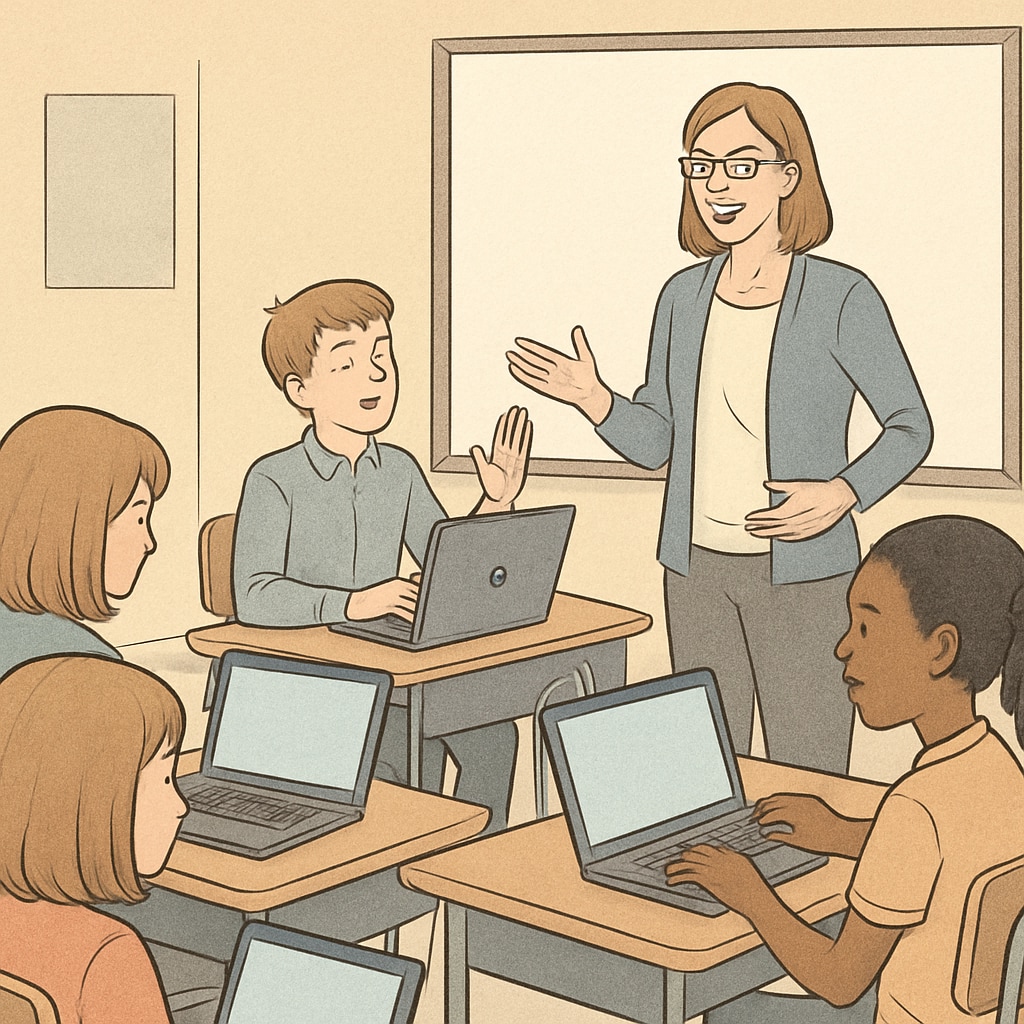In recent years, the integration of educational technology (EdTech) tools like Chromebooks has transformed K12 classrooms globally. These devices promise streamlined learning processes and increased efficiency, enabling educators to manage lessons more effectively. However, as we embrace these innovations, a pressing concern arises: could the growing reliance on EdTech inadvertently weaken students’ critical thinking skills? This article examines the intricate relationship between EdTech efficiency and the development of higher-order cognitive skills, urging educators to reflect on the appropriate role of technology in classrooms.
Efficiency Versus Depth: The EdTech Paradox
One of the most touted benefits of EdTech is its ability to increase efficiency. Platforms like Google Classroom allow teachers to distribute, collect, and grade assignments seamlessly, while tools like Chromebooks give students access to a world of information at their fingertips. However, the very convenience of these tools can sometimes lead to superficial learning. For instance, students may rely on quick internet searches to find answers rather than engaging deeply with problems or critically evaluating sources.
Critical thinking—defined as the ability to analyze, evaluate, and synthesize information—is a skill that requires time and deliberate practice. When students are encouraged to prioritize speed and convenience, the iterative processes of questioning, debating, and reflecting may be overlooked. In essence, the efficiency that EdTech provides could come at the cost of intellectual depth.

How Digital Tools Shape Cognitive Development
The ways in which EdTech tools are used can significantly influence cognitive development. For example, interactive learning platforms often provide immediate feedback, which can be beneficial for reinforcing basic concepts. However, they may also condition students to expect instant gratification, making it harder for them to grapple with complex or open-ended questions.
Furthermore, the design of many EdTech tools emphasizes user engagement through gamification and multimedia. While these features can enhance motivation, they may also distract from the deeper cognitive processes needed for critical thinking. A study published by the Encyclopaedia Britannica highlights that over-reliance on technology can impair students’ ability to engage in abstract reasoning and problem-solving.
Educators must, therefore, strike a balance between leveraging EdTech for its strengths and ensuring that students still engage in activities that foster independent thought. For instance, teachers can use technology to spark curiosity but follow up with assignments that require students to critically analyze or create something unique.

Strategies for Balancing Technology and Critical Thinking
To harness the benefits of EdTech while fostering critical thinking, educators can adopt the following strategies:
- Blend traditional and digital methods: Combine technology-driven tasks with offline activities such as debates, essays, and problem-solving exercises to encourage deeper thinking.
- Encourage inquiry-based learning: Use EdTech tools to pose open-ended questions and guide students through the process of exploring answers, rather than providing solutions outright.
- Focus on process over outcomes: Reward students for the steps they take to solve problems, rather than just the final answers, to emphasize critical analysis and reasoning.
- Teach digital literacy: Help students evaluate the credibility of online sources and understand the potential biases in digital resources.
By incorporating these practices, educators can create a learning environment that uses technology as a tool to enhance, rather than replace, critical thinking.
The Road Ahead: Rethinking EdTech’s Role
The rapid adoption of EdTech tools like Chromebooks has undoubtedly changed the educational landscape. While these innovations offer unparalleled opportunities for engagement and efficiency, they also present unique challenges. Educators, policymakers, and technologists must collaborate to ensure that the integration of EdTech does not come at the expense of essential cognitive skills like critical thinking.
As we move forward, it is crucial to view technology not as a panacea but as a complement to traditional teaching methods. By thoughtfully integrating digital tools with pedagogical strategies that promote higher-order thinking, we can prepare students for a future where both technical proficiency and critical thought are indispensable.
Readability guidance: This article uses short paragraphs, lists, and clear transitions to maintain readability. It balances the discussion of EdTech’s benefits with its potential drawbacks, providing actionable strategies for educators.


